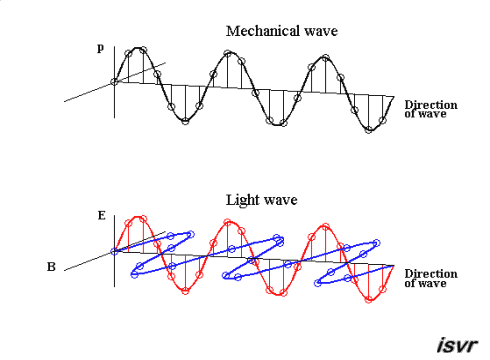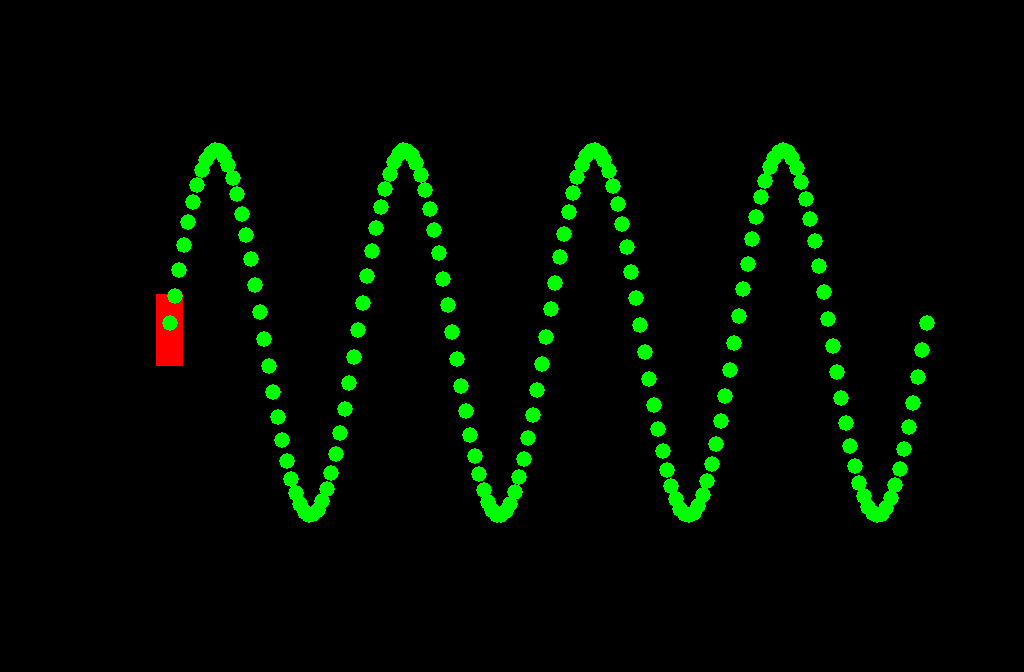|
Water waves and sound
waves are examples of mechanical waves. Light waves are not considered
mechanical waves. However, most of the mathematics and properties of
mechanical waves applies to light waves. Basically, a mechanical wave
is a disturbance which moves through a medium.
Light waves are
different from mechanical waves because they do not have to travel through
anything. Light from the sun travels to the earth through space, and there
is no air in spaceóitís a vacuum.
Light waves are just one type
of wave called electromagnetic waves. All electromagnetic waves
can travel through a vacuum. Other electromagnetic waves include the
microwaves in your oven, radio and television waves, and X-rays.
Electromagnetic waves are
created by the vibration of an electric charge. This vibration creates a
wave which has both an electric and a magnetic component whereas
mechanical waves usually correspond to variations in pressure or particle
displacement of the medium in which they travel. In particular, light
waves are regarded as a varying electric field (E) coupled with a varying
magnetic field (B), at right angles to each other and to the direction of
travel. This is depicted in the animation below.

An electromagnetic wave transports its
energy through a vacuum at a speed of 3.00 x 108 m/s (commonly
known as "c"),
i.e. the speed of light. The whole family of electromagnetic waves extends
from gamma rays of very short wavelength (lower than 10-10 m)
to very long radio waves (greater than 103 m). As for
mechanical waves, light waves exhibit reflection, refraction, interference
and diffraction and satisfy the relation
v = f λ.

THE PHYSICS OF
WAVES
|